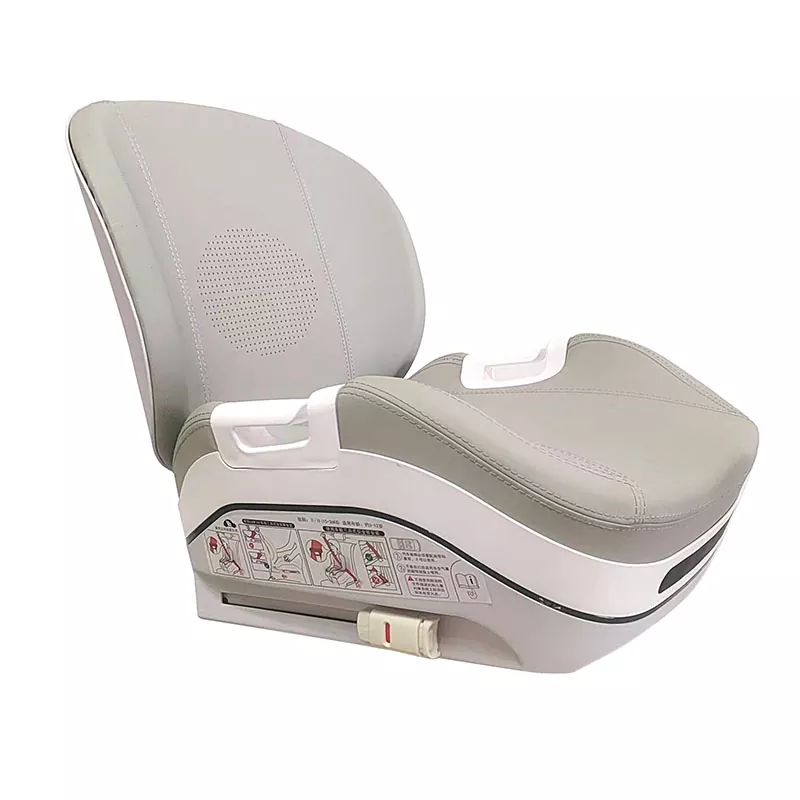What is the Types of Child Safety Seats
2024-10-26
Child safety seats are specialized car seats designed to protect infants and young children during vehicle travel by properly restraining them in the event of sudden stops, sharp turns, or accidents. Here’s a guide to the fundamentals of child safety seats:

1. Types of Child Safety Seats
- Infant Car Seats: For babies up to 20–35 pounds (9–16 kg) and usually up to 32 inches (81 cm) in height. These are rear-facing only, offering maximum support for infants’ heads, necks, and spines.
- Convertible Car Seats: Suitable for both rear-facing and forward-facing use, convertible seats accommodate children from infancy up to preschool age. These are ideal as they can be adjusted as a child grows.
- Booster Seats: For older children who have outgrown forward-facing seats but are not yet ready for adult seat belts. Booster seats position the child higher in the seat so the vehicle’s seat belt fits them correctly.
- All-in-One Seats: These seats can be adjusted for multiple stages, including rear-facing, forward-facing, and booster configurations. They’re often designed to grow with a child, from infancy up to when they no longer need a car seat.
2. Importance of Proper Installation
- Proper installation is crucial to the effectiveness of any child safety seat. Poor installation can reduce the seat’s protective benefits and increase the risk of injury.
- Use either the vehicle’s seatbelt or the LATCH (Lower Anchors and Tethers for Children) system, which helps secure the seat without a seatbelt. It’s essential to follow both the car seat and vehicle manual to ensure correct installation.
3. Rear-Facing vs. Forward-Facing
- Rear-Facing: Recommended for infants and toddlers as it provides the best support in the event of a collision. Most child safety experts advise keeping children rear-facing until at least age 2 or until they reach the maximum weight and height limits specified for the car seat.
- Forward-Facing: Suitable once a child has outgrown the rear-facing seat, forward-facing seats use a five-point harness to secure the child. This stage usually applies to children from ages 2 to 4, depending on size.
4. Five-Point Harness System
- Many child safety seats use a five-point harness, which has straps across the shoulders, hips, and between the legs, securing the child at five different points. This harness distributes crash forces evenly across the child’s body, reducing the risk of injury in an accident.
5. Child Safety Seat Regulations and Recommendations
- Many countries have specific guidelines and laws for child safety seats, often based on a child’s age, weight, and height.
- The American Academy of Pediatrics (AAP) and other safety organizations recommend that children use safety seats until they are big enough to properly fit in a standard seatbelt, typically around age 8 to 12 or when they reach 4'9" (145 cm) in height.
6. Safety Tips for Child Safety Seats
- Ensure the harness fits snugly on the child, with no slack. The chest clip should be positioned at armpit level.
- Never place a child in the front seat if a passenger airbag is present; the back seat is always the safest.
- Replace car seats that have been in a moderate or severe accident or have reached the expiration date recommended by the manufacturer.
7. Child Safety Seat Certifications
- Look for seats that meet or exceed safety standards, such as those certified by the National Highway Traffic Safety Administration (NHTSA) in the U.S. or the ECE R44/04 and R129 (i-Size) standards in Europe. These certifications indicate that the seat has undergone rigorous crash testing and meets safety requirements.
Child safety seats are essential for protecting young passengers and significantly reduce the risk of injury during travel. Using them correctly based on a child’s size and age is key to ensuring their safety on the road.


